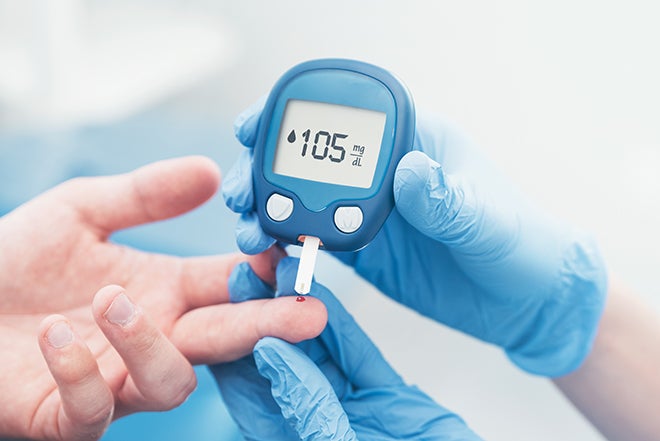Apple employees involved in the internal testing of the app had to prove they were prediabetic by taking a blood test that showed that they don’t currently have the disease but are at risk of getting type 2 diabetes. Those with type 1 diabetes produce little to no insulin as the result of an autoimmune disease that begins to affect the pancreas at a young age. Insulin injections are the main treatment for type 1 diabetes.


A glucometer uses a blood prick placed on a disposable test strip to get diabetics’ blood glucose readings. | Image credit-PatientsEngage
Type 2 diabetes is usually contracted from genetics and/or a lifestyle decision. Insulin production is normal at first and then declines. Type 2 diabetes starts when the patient is older and treatment includes lifestyle changes, medication, and insulin. To reiterate, Apple employees involved in testing the app had to show that they were at risk of getting type 2 diabetes. These employees monitored their blood sugar using commercially available devices such as glucometers that require the user to draw blood from their fingers using a sharp tool called a lancet.
The blood is placed on an expensive, disposable test strip that has already been placed in a slot on the glucometer. After the blood is applied to the strip, the glucometer takes a few seconds to reveal the user’s blood glucose reading. This number determines how much insulin the diabetic must take before each meal.
Additionally, the Apple Watch’s non-invasive blood glucose sensor could warn diabetics when their blood sugar is dangerously low which is a condition known as hypoglycemia and could lead the diabetic to pass out or go into a coma. Drinking a sugar-filled juice or eating a sugar-rich candy bar will bring the diabetic’s blood sugar back to a normal level. Apple has supposedly made some progress toward creating the sensor but it is still years away.
Apple’s non-invasive blood glucose sensor would use lasers to shoot light into the skin and read the amount of glucose in the users blood. The first iteration of the feature might only warn users if they are prediabetic; subsequent versions will give users their specific blood-sugar readings allowing diabetics to use the feature to compute how much insulin they need to inject before eating.
Apple’s use of employees to test the blood-sugar app in development isn’t unusual as the company recently used employees to test the new sleep apnea feature on the Apple Watch. The same strategy will be used to help Apple develop a hypertension detection feature for the Apple Watch that will warn wearers of the device when their blood pressure might be running high.






